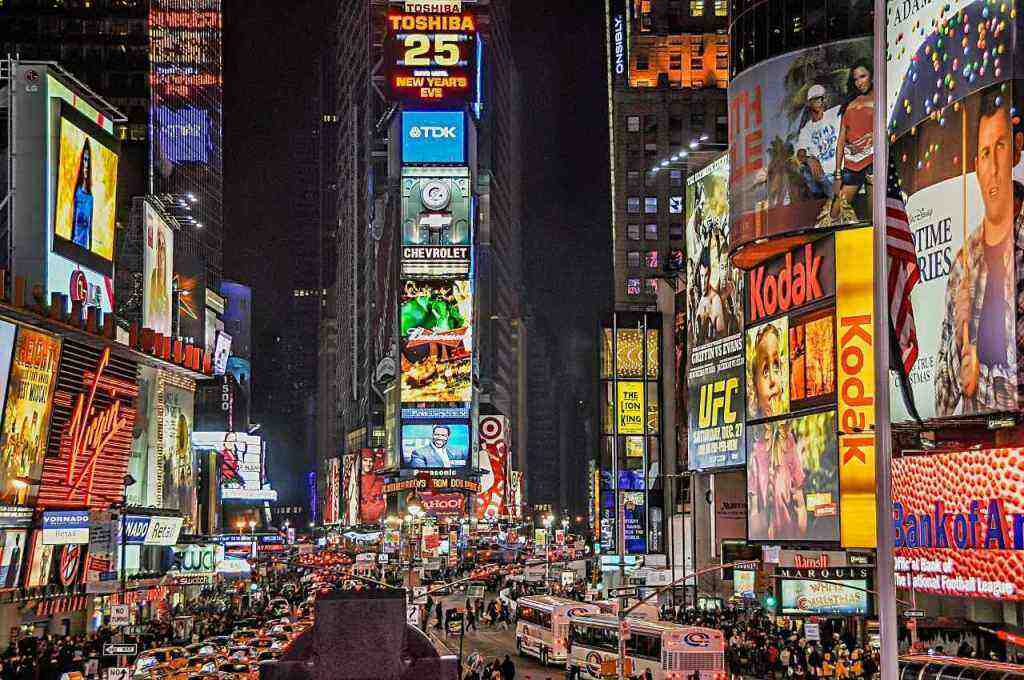West End Avenue’s Controversial New Advertisement: A Comprehensive Analysis
Amidst the vibrant tapestry of New York City’s Upper West Side, a colossal advertisement recently emerged on the property facade of 720 West End Avenue, captivating the attention of residents and passersby alike. Featuring a striking image of a woman in red against the backdrop of the words “Up End the West End,” the advertisement has sparked a wave of discussions and debates among the community. This article delves into the details surrounding this eye-catching marketing campaign, exploring its legality, history, and implications for the neighborhood.
The Advertisement: A Closer Look
The advertisement in question is a massive display that covers the entire building face of 720 West End Avenue. It features a vibrant illustration of a woman clad in a red dress, standing atop the words “Up End the West End.” Accompanying the imagery are a website and a QR code, inviting viewers to explore the promotional site for the upcoming luxury building set to open in the spring of 2024. The website showcases the building’s 131 luxury units and boasts an array of exceptional amenities, including on-site parking, basketball courts, squash facilities, and more.
Controversy and Legal Questions
The sheer size and placement of the advertisement have raised concerns among residents and local officials. Questions have been raised regarding its legality, given the residential nature of the neighborhood and the strict regulations governing advertising signage in New York City. The Department of Buildings (DOB) has confirmed an inspection of the site was scheduled to determine whether the advertisement complies with zoning regulations and safety standards. The outcome of the inspection will shed light on the legality of the advertisement and its potential removal.
Community Concerns
The prospect of a large-scale advertisement dominating the neighborhood’s landscape has sparked mixed reactions among the community. While some residents view it as an innovative marketing strategy, others express concerns about its visual impact and potential disruption to the neighborhood’s character. There are worries that if this advertising trend is allowed to continue, it could set a precedent for similar developments in other residential areas, leading to a cluttered and commercialized cityscape.
Historical Context: The Building’s Past
The property at 720 West End Avenue has a storied past. It was once home to The Salvation Army’s Williams Residence Senior Home, providing housing and care for elderly individuals. However, in 2014, plans to sell the building to luxury developer Brack Capital Real Estate sparked protests and legal challenges. Community members and elected officials, including then Manhattan Borough President Gale Brewer, voiced concerns about the loss of affordable housing and the impact on the neighborhood’s fabric. The sale was eventually postponed until 2015, but it went through despite ongoing opposition.
In 2021, the building changed hands again, with Brack Capital selling it to Wafra Capital Partners for $165 million. The building stood vacant and gutted at the time of the sale, leaving the new owner with various options for its future. The decision to convert the property into luxury condominiums reflects the ongoing trend of gentrification and development in the Upper West Side neighborhood.
The Future of 720 West End Avenue
The upcoming luxury building at 720 West End Avenue promises to bring a new wave of opulence and exclusivity to the Upper West Side. With its prime location, pre-war charm, and extensive amenities, the development is poised to attract affluent buyers seeking a sophisticated urban lifestyle. However, the controversy surrounding the building’s advertisement serves as a reminder of the ongoing tensions between progress and preservation in New York City’s rapidly changing neighborhoods.
Conclusion
The massive advertisement at 720 West End Avenue has become a symbol of the ongoing debate over the future of New York City’s neighborhoods. As the city continues to evolve, residents and policymakers must navigate the delicate balance between development and community character. The resolution of the legality of the advertisement and the ultimate fate of the building will shape the future of this iconic corner of the Upper West Side.
